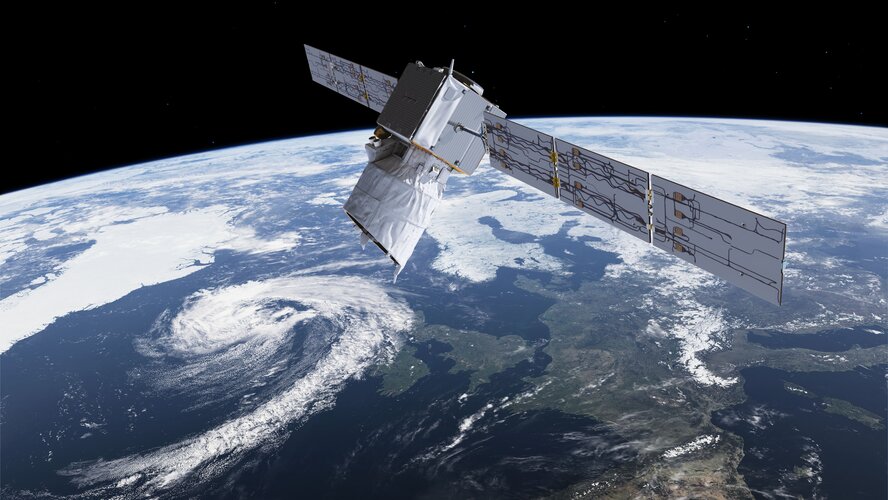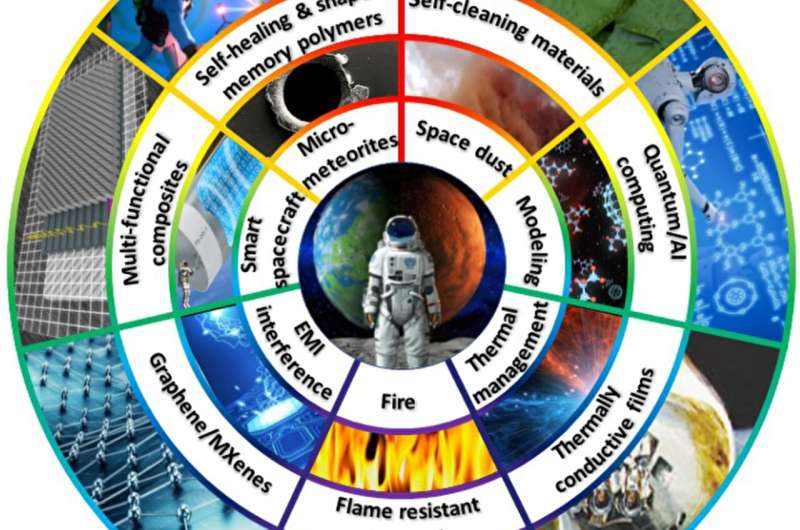
Copernical Team
In search of electromagnetic counterparts of gravitational waves
 Alessandra Corsi knows that when you shoot for the stars, anything can happen. It's in that spirit of intellectual curiosity that Corsi, an associate professor in Texas Tech University's Department of Physics and Astronomy, will peer into some of the farthest recesses of space in search of gravitational waves.
"We are at a critical moment in this field," she said. "We had one event in 2017
Alessandra Corsi knows that when you shoot for the stars, anything can happen. It's in that spirit of intellectual curiosity that Corsi, an associate professor in Texas Tech University's Department of Physics and Astronomy, will peer into some of the farthest recesses of space in search of gravitational waves.
"We are at a critical moment in this field," she said. "We had one event in 2017 Retired stars join the young stars' party in the sky: how evolved stars contribute to the early heating of Earth
 Researchers from the University of Sheffield and Imperial College London have spotted a 'retired' Asymptotic Giant Branch (AGB) star passing through a young star-forming region, something which was previously thought not to happen.
The researchers identified this interaction occurred in one of the places where they think stars like our Sun must form, using the Gaia satellite, a 740m euro
Researchers from the University of Sheffield and Imperial College London have spotted a 'retired' Asymptotic Giant Branch (AGB) star passing through a young star-forming region, something which was previously thought not to happen.
The researchers identified this interaction occurred in one of the places where they think stars like our Sun must form, using the Gaia satellite, a 740m euro Goddard, Wallops Engineers Test Printed Electronics in Space
 Today's small spacecraft pack sensors, guidance and control, and operating electronics into every available space. Printing electronic circuits on the walls and structures of spacecraft could help future missions do more in smaller packages.
Engineers successfully tested hybrid printed circuits at the edge of space in an April 25 sounding rocket flight from NASA's Wallops Flight Facility n
Today's small spacecraft pack sensors, guidance and control, and operating electronics into every available space. Printing electronic circuits on the walls and structures of spacecraft could help future missions do more in smaller packages.
Engineers successfully tested hybrid printed circuits at the edge of space in an April 25 sounding rocket flight from NASA's Wallops Flight Facility n Ex-intel officer says US hiding info on alien craft
 We are not alone - and American authorities are covering up the evidence, a former US intelligence officer told a congressional committee on Wednesday.
David Grusch testified that he "absolutely" believes the government is in possession of unidentified anomalous phenomena, or UAPs - which has replaced the term UFO in official parlance - as well as remains of their non-human operators.
We are not alone - and American authorities are covering up the evidence, a former US intelligence officer told a congressional committee on Wednesday.
David Grusch testified that he "absolutely" believes the government is in possession of unidentified anomalous phenomena, or UAPs - which has replaced the term UFO in official parlance - as well as remains of their non-human operators. Sols 3895-3897: Navigating Through the Crater Cluster
 Earth planning date: Friday, July 21, 2023: Curiosity is working her way through the "Jau" crater cluster, with the goal of trying to understand how all of these small craters formed and have since been eroded.
To do that, the team is hoping to assess the target rocks, any evidence for the impactor, and the morphology of the craters. While the craters are very easy to see in orbital images
Earth planning date: Friday, July 21, 2023: Curiosity is working her way through the "Jau" crater cluster, with the goal of trying to understand how all of these small craters formed and have since been eroded.
To do that, the team is hoping to assess the target rocks, any evidence for the impactor, and the morphology of the craters. While the craters are very easy to see in orbital images Water discovered in rocky planet-forming zone offers clues on habitability
 Using the James Webb Space Telescope, the MPIA-led MINDS research collaboration discovered water in the inner region of a disk of gas and dust around the young star PDS 70. Astronomers expect terrestrial planets to be forming in that zone. This is the first detection of that kind in a disk that hosts at least two planets.
Any rocky planets produced in the inner disk would benefit from a su
Using the James Webb Space Telescope, the MPIA-led MINDS research collaboration discovered water in the inner region of a disk of gas and dust around the young star PDS 70. Astronomers expect terrestrial planets to be forming in that zone. This is the first detection of that kind in a disk that hosts at least two planets.
Any rocky planets produced in the inner disk would benefit from a su Webb Snaps Highly Detailed Infrared Image of Actively Forming Stars
 Young stars are rambunctious! NASA's James Webb Space Telescope has captured the "antics" of a pair of actively forming young stars, known as Herbig-Haro 46/47, in high-resolution near-infrared light. To find them, trace the bright pink and red diffraction spikes until you hit the center: The stars are within the orange-white splotch. They are buried deeply in a disk of gas and dust that feeds t
Young stars are rambunctious! NASA's James Webb Space Telescope has captured the "antics" of a pair of actively forming young stars, known as Herbig-Haro 46/47, in high-resolution near-infrared light. To find them, trace the bright pink and red diffraction spikes until you hit the center: The stars are within the orange-white splotch. They are buried deeply in a disk of gas and dust that feeds t Surface Avatar - an astronaut on board the ISS controls a robot team on Earth
Aeolus reentry - LIVE

Aeolus reentry - LIVE
Get rolling updates on the Aeolus reentry, on the Rocket Science blog
The amazing new materials that hold the key to new space discoveries

Space is a dangerous place. From micro-meteorites and electromagnetic interference to fires in space and extreme heat and cold, we need to develop new materials to enable the next generation of space travel and intergalactic travel.
New Swinburne research published in Advanced Composites and Hybrid Materials highlights the cutting-edge materials that are solving these problems, including those being developed by Swinburne's Multifunctional Materials and Composites team.
These include self-healing polymers, fire and thermally resistant materials, materials for thermal management, self-cleaning materials, EMI shielding materials and multifunctional carbon fiber composites.
Lead author and Swinburne Engineering Senior Lecturer Dr.

































